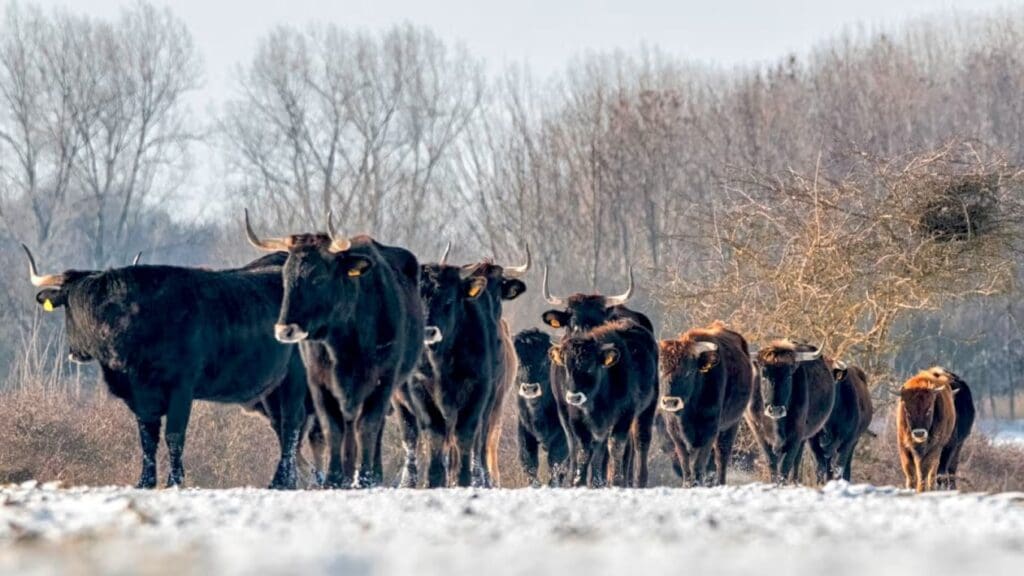Iwas crouched on the ground, 50 feet from an aurochs. At least it looked like one. Eight generations of back-breeding had resurrected an animal reminiscent of the giant bovine that crashed from Earth’s biota in 1627. The coal-black beast had the forward-facing horns of the long-extinct aurochs. It had the same muscular shoulders and neck. […]
—
Iwas crouched on the ground, 50 feet from an aurochs.
At least it looked like one. Eight generations of back-breeding had resurrected an animal reminiscent of the giant bovine that crashed from Earth’s biota in 1627. The coal-black beast had the forward-facing horns of the long-extinct aurochs. It had the same muscular shoulders and neck. The bull’s legs were long and athletic. It even had a yellow “eel-stripe” running down the length of its spine, a distinguishing feature of aurochs. As I watched him pull grass from a Dutch field on a gray March afternoon, I thought about the art on the cave walls at Chauvet. If de-extinction is possible, I was looking at it.




